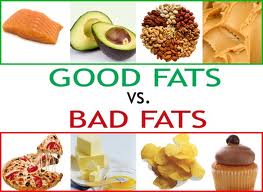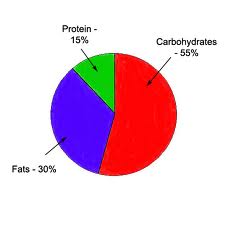For a Sport Science school assignment on Nutrition I recently completed, I came across a topic which I found quite interesting, yet is commonly confused. It is having to do with the effects, difference, advantages aswell as disadvantages and example of GOOD VS BAD FATS.
So I have decided to do a bit of research and outline my findings below;
|
GOOD FATS |
BAD FATS |
|
|
Examples: Good fats:
- Olive, canola, sunflower, coconut, peanut and sesame oil/s.
- Avocados
- Olive
- Nuts- almonds, walnuts, peanuts, macadamias, pecans, cashews, hazelnuts, brazil etc.
- Peanut butter (though always check label for what kind of oils are found in it)
- Seeds- pumpkin, sesame, pepita, sunflower etc.
- Tofu
- Soy milk
- Fish- salmon, tuna, mackerel, trout, sardines etc.
Bad fats:
- Pastries- pies
- Cookies
- Doughnuts
- Potato chips
- Muffins
- Cakes
- Packaged foods- chips, some crackers, biscuits etc.
- Fried foods- chips, nuggets, fish, chicken
- Candy bars/lollies
- Vegetable shortening
- Stick form butter and margarine
- Processed and fatty meats- beef, lamb,pork, sausages
- Cheese
- Palm oil
- Pre-mixed products- cake, brownie, muffin mixes
What is cholesterol? Cholesterol is a fat-like substance, which is essential to our body’s metabolic processes.
High-density lipoprotein (HDL): Good cholesterol
Low -density lipoprotein (LDL): Bad cholesterol
You may have heard of the term ‘high cholesterol’. It is when foods high in bad fats such as; trans and saturated fats (mentioned above) leads to blood vessels becoming smaller and smaller that they will later become blocked, due to fatty deposits expanding in your arteries. The result of this will be heart diseases and strokes.
*The recommended daily intake percentages can be found below in the diagram
Sometimes all you need is a bit of a switch to make healthier choices in relation to food! I will talk more about ‘Food Swaps’ next week on the site!



